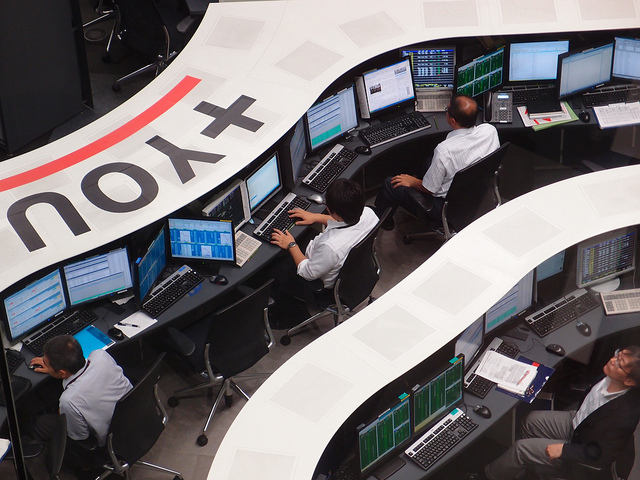After any dramatic market sell-off there is invariably a flurry of after-the-event rationalisation, an exercise in ‘Who done it?’. Many believe the trigger of the current sell-off was pulled by the People’s Bank of China in December when it moved to measure the value of the renminbi against a basket of currencies rather than the dollar, which made it easier to devalue the currency by circa 1.4%.
As was the case last August, this was interpreted as further evidence of an increasing risk of a hard landing for the Chinese economy, and the inevitability of a substantial devaluation with its attendant deflationary implications. Huge though they are, Chinese foreign exchange reserves were apparently at risk of being overwhelmed by burgeoning capital outflows.
The US Federal Reserve Board (Fed) also made it on to the ‘who done it’ list. The risk of the Fed raising interest rates, in the teeth of increasingly alarming evidence of weakness in the US manufacturing sector, and the conflict in statements from its senior board governors, suggested a determination to fight inflationary, rather than deflationary, forces. Other suspects include plummeting oil prices, (which have been causing sovereign wealth fund asset liquidation and forcing banks to write off loans), deteriorating liquidity, pro-cyclical risk management and high frequency trading. In short, markets are full of convexity (interest rate risk) and prone to more violent, but episodic shocks.
Where now?
We continue to expect a weak, but positive, global growth outcome in 2016, believing recession risks in the key developed economies to be exaggerated.
In our view, oil price weakness is very much a supply problem rather than an indicator of collapsing demand, which continues to rise and, in any event, it has more than likely over-shot on the downside. Although disruptive in the shorter term, weak commodity and especially oil prices should, ultimately, be significant positive drivers for global growth. In contrast to manufacturing, the much larger consumer sector is in reasonably good shape across the developed world and the shift in the balance of demand will continue to move in the latter’s favour.
Despite the market angst, our view is that China’s economy is slowing down in a relatively measured manner and the capital outflow scare is wildly exaggerated. This is not to deny the transitional challenges it faces and that there are downside risks. If the Fed does raise rates in line with the higher estimates, it will be against a background of a strengthening US economy. For now, despite the downgrades, forecast earnings in the US, Europe and Japan remain positive.
Liquidity, the key challenge
Liquidity remains the key challenge. Tighter US monetary conditions and the anticipation of further tightening has caused emerging market liquidity to swing from abundance in the heyday of quantitative easing to scarcity now. This has effectively offset looser monetary policy in Europe and Japan. Paradoxically, global monetary conditions appear to be much more restrictive than the low level of nominal and real interest rates would seem to imply. Contrary to expectations, the Bank of Japan have effectively expanded their quantitative easing programme further, with the introduction of negative interest rates and the European Central Bank has intimated that it could do the same. A recognition of this on the part of the Fed in 2016 could well prove decisive in reducing the risk of more negative outcomes.
The return of Ro-Ro
We, therefore, believe the period ahead is likely to prove to be one of uncertainty and transition, not unlike the ‘risk-on, risk-off’ period we saw between 2010 and mid- 2012. Portfolio resilience will remain a particularly important theme, which requires selectivity in terms of the choice of defensive assets. Among these long-dated US Treasuries, the yen and the euro are our current preferences. Interestingly the dollar, which admirably fulfilled that role over the last three years, may be losing some of its lustre against other developed market currencies. Arguably, the US dollar has moved far further than likely real rate divergence really justifies.
In our view, equities, especially after the recent market weakness, are not trading at excessive valuations. Risk premia relative to bonds are high, if, as we suspect, bond yields are going to remain low on a structural basis. Patience may still be required with regards to assessing value asset classes that are repricing, such as high yield bonds and emerging market currencies and debt. However, selective opportunities are arising where risk premia have risen to levels that should prove to be attractive over the medium to longer term.
Finding bottom-up equity opportunities
From a bottom-up equity perspective, as has been the case for a while, it should still prove to be a challenging environment for cyclical stocks, with investors likely to continue to be prepared to pay up for ‘quality’. There is ‘value’ in the out-of-favour financial, materials and energy sectors, but earnings dynamics remain resolutely negative. Established technology stocks are one of the few subsectors that could be described as squaring the circle between quality and value and, as such, are a favoured area.
In a more volatile environment there is a general assumption that the large index constituent stocks should be preferred. However, the dynamics of indexation may have reached a tipping point, because our bottom-up steers are favouring the merely large cap and mid cap stock territories and ‘active shares’ in our equity allocations are high. We believe volatility will continue throughout 2016, which will increase the need for portfolio resilience. Investing in quality stocks should help to navigate this environment.
Philip Saunders is Co-Head of Multi-Asset at Investe.




 By Fórmate a Fondo
By Fórmate a Fondo